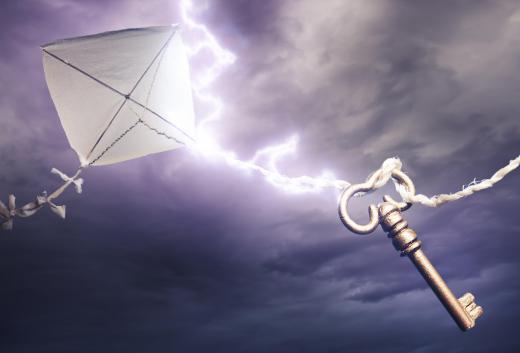What is a Capacitor?
A capacitor is a tool consisting of two conductive plates, each of which hosts an opposite charge. These plates are separated by a dielectric or other form of insulator, which helps them maintain an electric charge. There are several types of insulators used in capacitors, including ceramic, polyester, tantalum air, and polystyrene. Other common insulators include air, paper, and plastic. Each effectively prevents the plates from touching each other.
There are a number of different ways to use a capacitor, such as to store analog signals and digital data. Another type is used in the telecommunications equipment industry to adjust the frequency and tuning of telecommunications equipment. This is often referred to a variable capacitor. A capacitor is also ideal for storing electrons, but it cannot make them.

The first capacitor was the Leyden jar, invented at the Netherlands University in the 18th century. It consists of a glass jar coated with metal on the inside and outside. A rod is connected to the inner coat of metal, passed through the lid, and topped off with a metal ball. As with all capacitors, the jar contains an oppositely charged electrode and a plate that is separated by an insulator. The Leyden jar has been used to conduct experiments in electricity for hundreds of years.
A capacitor can be measured in voltage, which differs on each of the two interior plates. Both plates are charged, but the current flows in opposite directions. A capacitor contains 1.5 volts, which is the same voltage found in a common AA battery. As voltage is used, one of the two plates becomes filled with a steady flow of current. At the same time, the current flows away from the other plate.
To understand the flow of voltage in a capacitor, it is helpful to look at naturally occurring examples. Lightning, for example, works in a similar way. The cloud represents one of the plates and the ground represents the other. The lightning is the charging factor moving between the ground and the cloud.
AS FEATURED ON:
AS FEATURED ON:











Discussion Comments
The only problem with that idea that electronics is a branch of physics, and as such must follow the law of conservation of energy. Meaning, energy is neither created nor destroyed, but it rather changes form. Since the scooter motor is running both a generator and another engine, it will use x amount of energy. The generator, even barring resistances such as wiring and voltage leakage, would produce less energy than what would be needed by the scooter motor, because some of the energy made by the generator/scooter motor loop is lost to the car motor. Perpetual, by definition, means "infinite"; as such, there is no (current) source of infinite power (true superconductors being the ideal goal) known to man. Basically, in theory it would be possible to run a generator off of a motor and vice versa, and while they may run for an extremely long time, they would not be truly infinite because of outside sources of resistance like chemical resistances in the wiring, and the physical friction caused by the chain/belt connecting the generator with the motor. The closer you get to eliminating those variables, the longer the machine will run, but there will eventually be some resistance at some point that will, over time, drain the charge. Adding in another load (in this case, a car motor) would just quicken the decay of the circuit. Hopes this helps :)
One electric motor from a motor scooter, one electric wind powered generator; without propeller, one belt with pulleys and/or gear drives; set to the proper ratio, one battery, one ac/dc converter to tickle charge the battery and run the scooter motor when engaged; plus or minus a few relays, and one electric car. Equals perpetual motion, go figure!
Same principle can be applied to electric companies; on a larger scale, homes, businesses, and industrial equipment. People can save money and spend more on other things, thus fueling the world economy, reducing pollution, and releasing us from oil dependency.
Once the scooter motor has engaged the electric wind generator motor, the supply of energy is relayed to the electric scooter motor via ac/dc converter, the rest is used to run electric car. A small portion goes back into the battery to resupply energy spent. A variable speed may be necessary to run separate power supplies; heater, radio, and other accessories. Stop and go will trigger this response so that a constant sorce is used while running car. Or is there a way to store energy in some type of capacitor, that will carry enough charge to re-engage electric scooter motor. A wind up that carry's enough energy could also be used as well. Why isn't this possible? External source or not once running isn't this a type or perpetual motion?, beats using combustion type engine to supply the energy to electric motor.
Post your comments